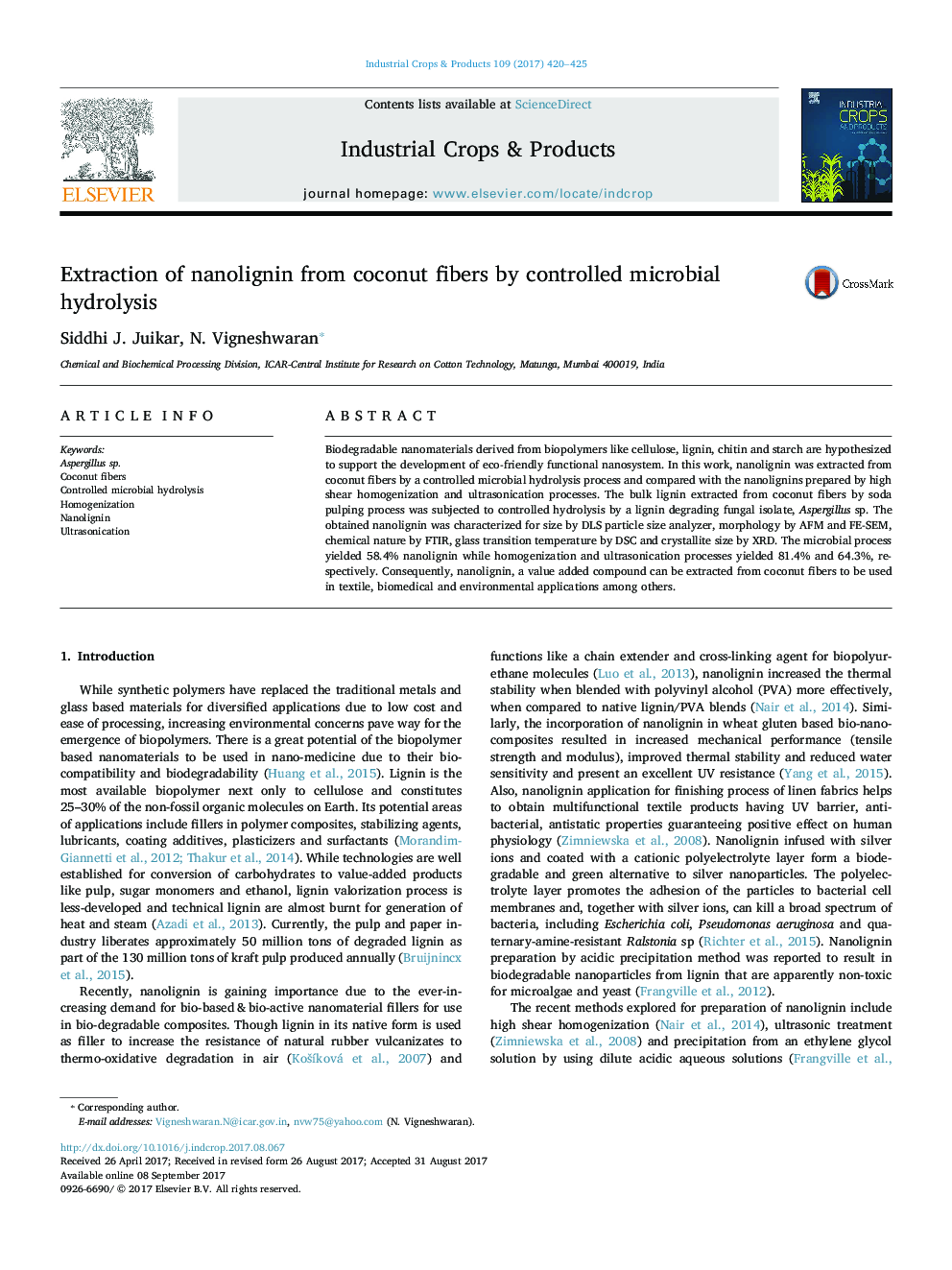| Article ID | Journal | Published Year | Pages | File Type |
|---|---|---|---|---|
| 5761733 | Industrial Crops and Products | 2017 | 6 Pages |
â¢Lignin was extracted from coconut fibers by soda pulping process.â¢Lignin utilizing fungus, Aspergillus sp. was isolated from a compost sample.â¢Nanolignin was prepared by homogenization, ultrasonication and microbial processes.â¢Microbial process yielded 58.4% nanolignin.
Biodegradable nanomaterials derived from biopolymers like cellulose, lignin, chitin and starch are hypothesized to support the development of eco-friendly functional nanosystem. In this work, nanolignin was extracted from coconut fibers by a controlled microbial hydrolysis process and compared with the nanolignins prepared by high shear homogenization and ultrasonication processes. The bulk lignin extracted from coconut fibers by soda pulping process was subjected to controlled hydrolysis by a lignin degrading fungal isolate, Aspergillus sp. The obtained nanolignin was characterized for size by DLS particle size analyzer, morphology by AFM and FE-SEM, chemical nature by FTIR, glass transition temperature by DSC and crystallite size by XRD. The microbial process yielded 58.4% nanolignin while homogenization and ultrasonication processes yielded 81.4% and 64.3%, respectively. Consequently, nanolignin, a value added compound can be extracted from coconut fibers to be used in textile, biomedical and environmental applications among others.
Graphical abstractDownload high-res image (128KB)Download full-size image
